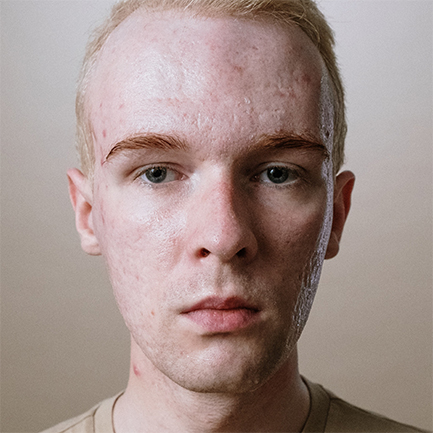ACNE SCARRING
Acne scarring can be treated with a variety of modalities. Each patient will need a different collection of treatments to help them achieve their best results. This is because every type of acne scarring and skin type requires a slightly different approach. Microneedling, subscision, lasers, and chemical peels are all options that oftentimes work well in concert with each other. All modalities require a series of treatments spaced 4-6 weeks apart.
It is important to understand that acne scar revision is a journey. Using a “home-run” approach with combined aggressive treatments requires a good deal of downtime and some risk (shorter journey but it’s still a journey). More graduated, less aggressive approaches can sometimes match aggressive approaches, with less risk, but multiple treatments (longer journey).
Microneedling

Microneedling procedures use electronic-mechanical tiny needles to create controlled micro-injuries in the skin at precise depths to stimulate collagen and elastin production resulting in remodeling of scar tissue and improvement in skin texture, pigmentation, tone, fine lines, and wrinkles. This can be carried out after use of topical numbing cream for 30-45 minutes. Healing requires 1-3 days. Some persistent redness, tightness, and even peeling can occur up to 7 days after treatment.
Subcision
Subcision is an outpatient surgical office procedure where fibrotic strands or scar tissue are broken up with a needle or cannula. This treatment is ideal for rolling acne scars (stretchable, depressed scars with gently sloping edges). Dr. Contestable uses many modalities for subcision including cannulas, NokorTM, needles, and micro-cannulas. This treatment is typically done using tumescent anesthesia. It is relatively painless. Bruising is common. Swelling typically lasts 24 hours. Dr. Contestable typically combines this procedure with lasers, CROSS, and/or microneedling.
Lasers
These are energy-based devices that use specific wavelengths of light to heat and/or evaporate skin to stimulate collagen production and remodel scars.
We commonly use CO2 (Lumenis Ultrapulse) for acne scar revision – both fractional and fully ablative techniques. Fractional ablation techniques usually require a series of 4-6 treatments spaced 4-6 weeks apart for best results. Fractional ablation requires 3-5 days of healing time and risks include post-treatment redness and hyperpigmentation (darkening) that can last weeks to months. Fully ablative treatment is more aggressive, but in some patients can lead to great results. Fully ablative treatment requires 5-10 days of healing time and risks include post-treatment redness and hyperpigmentation (darkening) that can last weeks to months. With fully ablative treatment hypopigmentation (lightening) can also occur and can sometimes be permanent.

Pulse Dye Laser (PDL) is another laser device that can be used to treat redness from recent acne outbreaks. This is a very helpful treatment if you have red marks on the skin before or while we are getting your acne under control. In our practice, the treatment of red spots after acne, also called post-inflammatory erythema (PIE), can significantly reduce the likelihood that you create scars from recent acne.
Chemical Peels
Chemical peels of a specifically selected strength and combination of chemicals are used to remove the epidermis and possibly superficial layers of the dermis to remodel scars.
One of the chemical peels we use is TCA (trichloroacetic acid) at high concentration called CROSS (Chemical Reconstruction of Skin Scars). We use this for ice-pick type scars. CROSS can require 4-6 treatments to be most effective. Sometimes instead of CROSS we use punch excision of the scars prior to another planned procedure such as laser or microneedling.
Source: American Academy of Dermatology (https://www.aad.org/public/diseases/acne/derm-treat/scars/treatment)
For Physicians only – “Acne Scars – Patient Handout”, “Microneedling – Patient Handout”, “TCA CROSS – Patient Handout”

